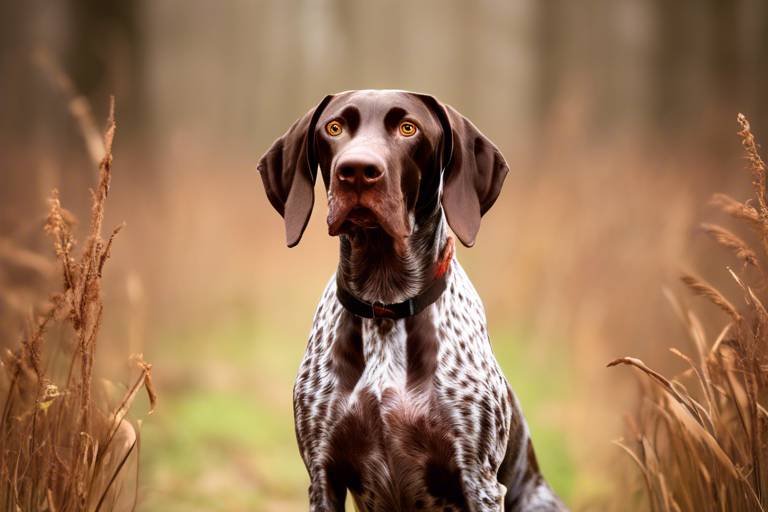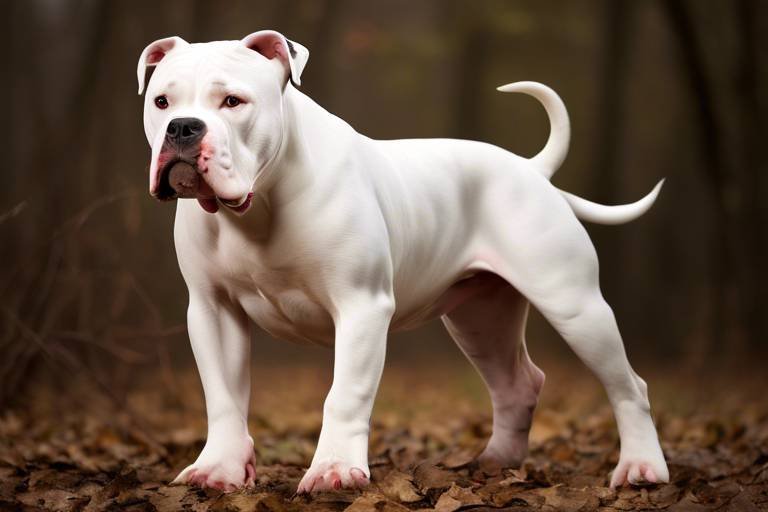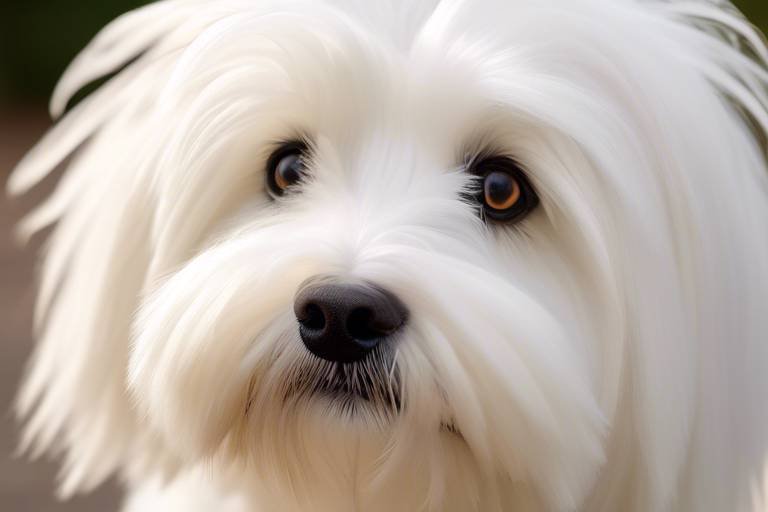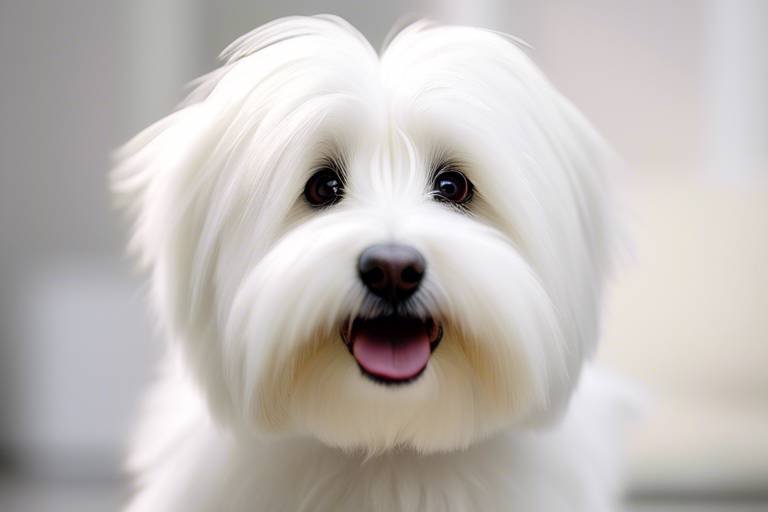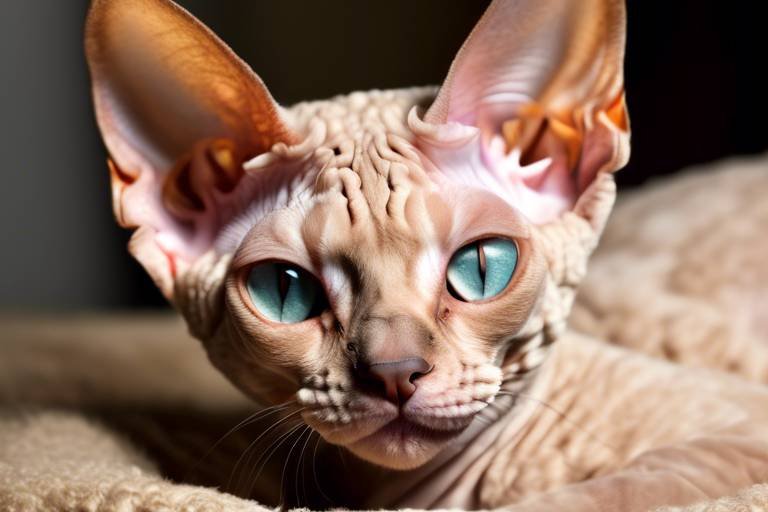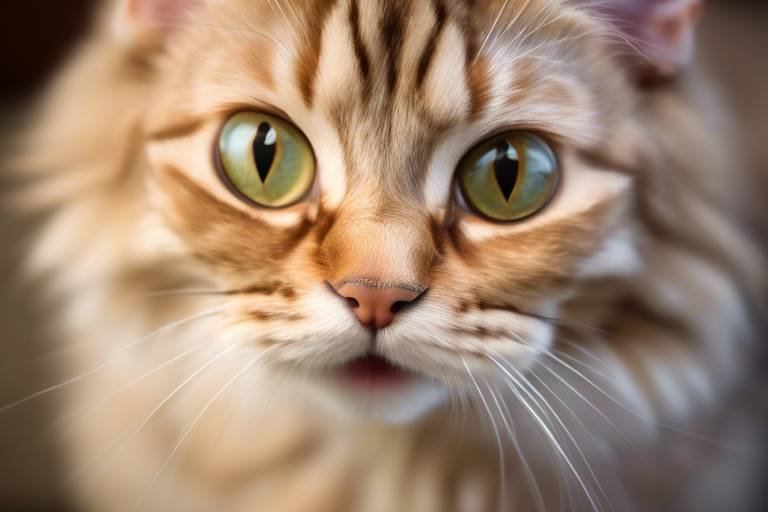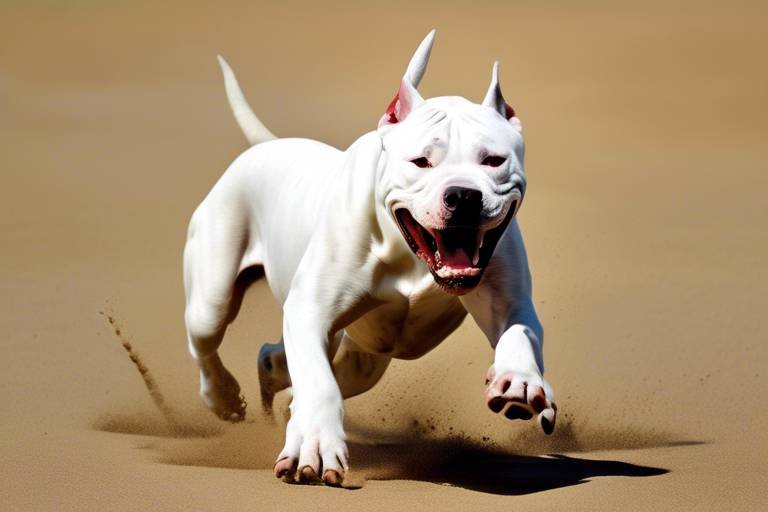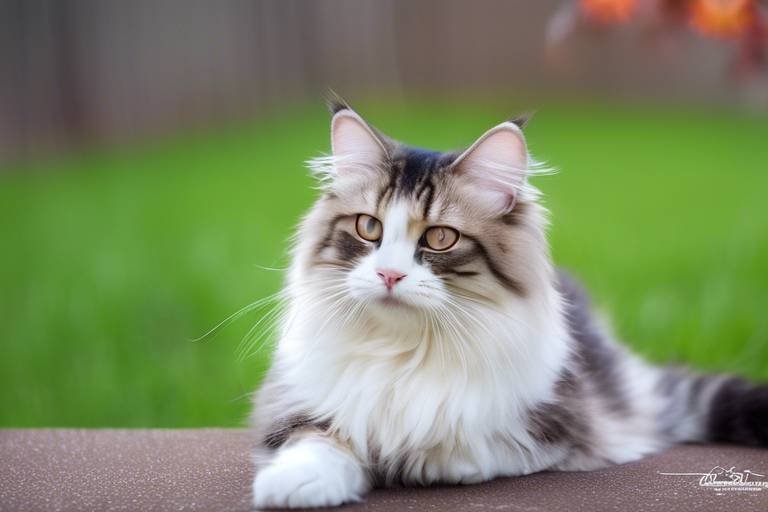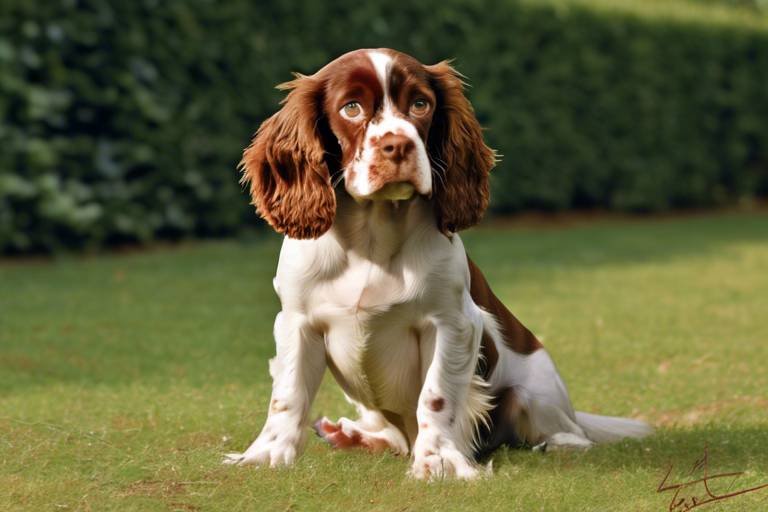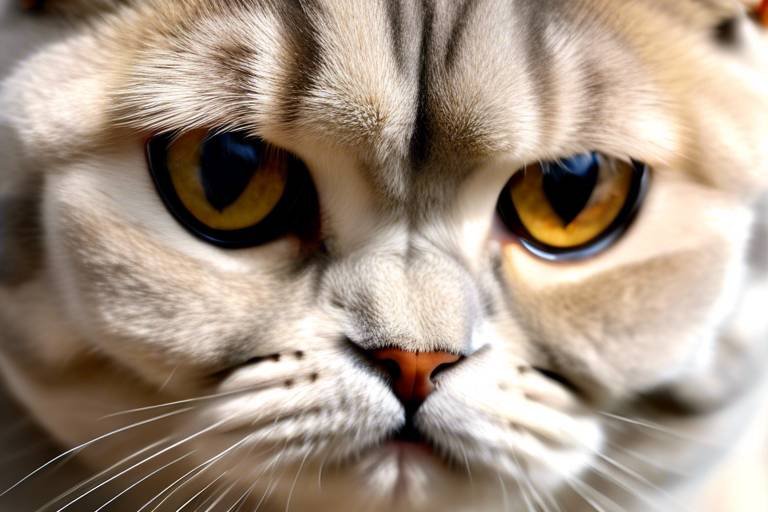Exploring the Personality of the German Shorthaired Pointer
The German Shorthaired Pointer (GSP) is a breed that captivates dog lovers with its vibrant personality and multifaceted traits. These dogs are not just pets; they are energetic companions and skilled working dogs, embodying a perfect blend of intelligence, loyalty, and exuberance. If you've ever watched a GSP in action, you know that their enthusiasm is contagious. They bound through fields with the grace of a gazelle, their tails wagging like flags in the wind, always ready for the next adventure. But what truly defines their personality? Let’s dive deep into the unique traits that make the GSP a remarkable breed.
The history of the German Shorthaired Pointer is as rich as its personality. Originating in Germany in the 19th century, this breed was developed for versatility in hunting. They were bred to be able to track, point, and retrieve game both on land and in water. This hunting background is crucial in understanding their behavior today. GSPs are naturally curious and have a strong prey drive, which means they can sometimes get distracted by scents or movements in their environment. Their ability to adapt to various hunting conditions also translates to a personality that is flexible and eager to learn new tasks, whether it’s fetching a ball or mastering agility courses.
The temperament of a German Shorthaired Pointer is best described as energetic, intelligent, and loyal. These traits make them not only engaging companions but also effective working dogs. Their high energy levels require them to be active throughout the day, so if you’re considering bringing a GSP into your home, be prepared for a lively household. They thrive on interaction and mental stimulation, and their loyalty to their family is unwavering. However, without proper training and socialization, their exuberance can sometimes lead to mischief.
German Shorthaired Pointers are known for their high energy levels. They are not the type of dog that enjoys lounging around the house all day. Instead, they require regular exercise and mental stimulation to maintain their well-being and happiness. Think of them as the ultimate workout partner; they’ll keep you on your toes! If you’re not ready to match their energy, you might find yourself outpaced on your daily walks.
To keep a German Shorthaired Pointer healthy, they need at least an hour of vigorous exercise daily. This can include:
- Running: They love to run, whether it's alongside you or on their own in a safe, enclosed area.
- Swimming: GSPs are natural swimmers, and they enjoy splashing around in lakes or pools.
- Playing Fetch: This classic game is a favorite and a great way to tire them out.
Engaging activities such as agility training, scent work, or obedience training can help fulfill their energy needs and strengthen the bond with their owners. These activities not only provide physical exercise but also challenge their minds, keeping them sharp and focused. A mentally stimulated GSP is a happy GSP!
Proper socialization from a young age is essential for German Shorthaired Pointers to develop into well-rounded dogs. If they are not exposed to various people, environments, and situations early on, they can become reserved or overly protective around strangers. Socialization helps them learn to adjust to new experiences, making them more adaptable and confident. Think of it as teaching them the ropes of the world around them.
German Shorthaired Pointers are highly intelligent, making them quick learners. However, their independent nature can sometimes pose challenges during training. They might not always follow commands on the first try, especially if they catch a whiff of something interesting. This intelligence means they require a consistent and engaging training approach that keeps them motivated.
Utilizing positive reinforcement techniques, such as treats and praise, can enhance training effectiveness. GSPs respond well to rewards, making training sessions more enjoyable for both the dog and the owner. By reinforcing good behavior with something they love, you’ll create a positive learning environment that encourages them to repeat those behaviors.
Some common challenges in training German Shorthaired Pointers include their stubbornness and distraction by scents. This requires patience and consistency from their owners. It’s essential to remember that while they may sometimes seem aloof or disinterested, they are always eager to please when approached correctly. With time and effort, you can turn these challenges into triumphs.
German Shorthaired Pointers can be excellent family pets, known for their affectionate nature and compatibility with children. They thrive in active households and are always eager to join in on family activities. However, it’s crucial to ensure they receive adequate training and socialization to help them interact positively with family members.
These dogs are generally gentle and playful with children, making them suitable companions for families. They have a natural instinct to protect their loved ones, and their playful demeanor can lead to hours of fun. However, it’s essential to supervise their interactions with young children to ensure that play remains safe and enjoyable for everyone involved.
While they thrive in active households, German Shorthaired Pointers require ample space to roam and play. They are best suited for homes with yards or access to open areas. If you live in an apartment, be prepared to take them out frequently for exercise and playtime. Remember, a tired GSP is a happy GSP!
- How much exercise does a German Shorthaired Pointer need? They require at least an hour of vigorous exercise daily.
- Are German Shorthaired Pointers good with children? Yes, they are generally gentle and playful, making them great companions for families.
- How can I train my German Shorthaired Pointer effectively? Use positive reinforcement techniques and be consistent in your training approach.
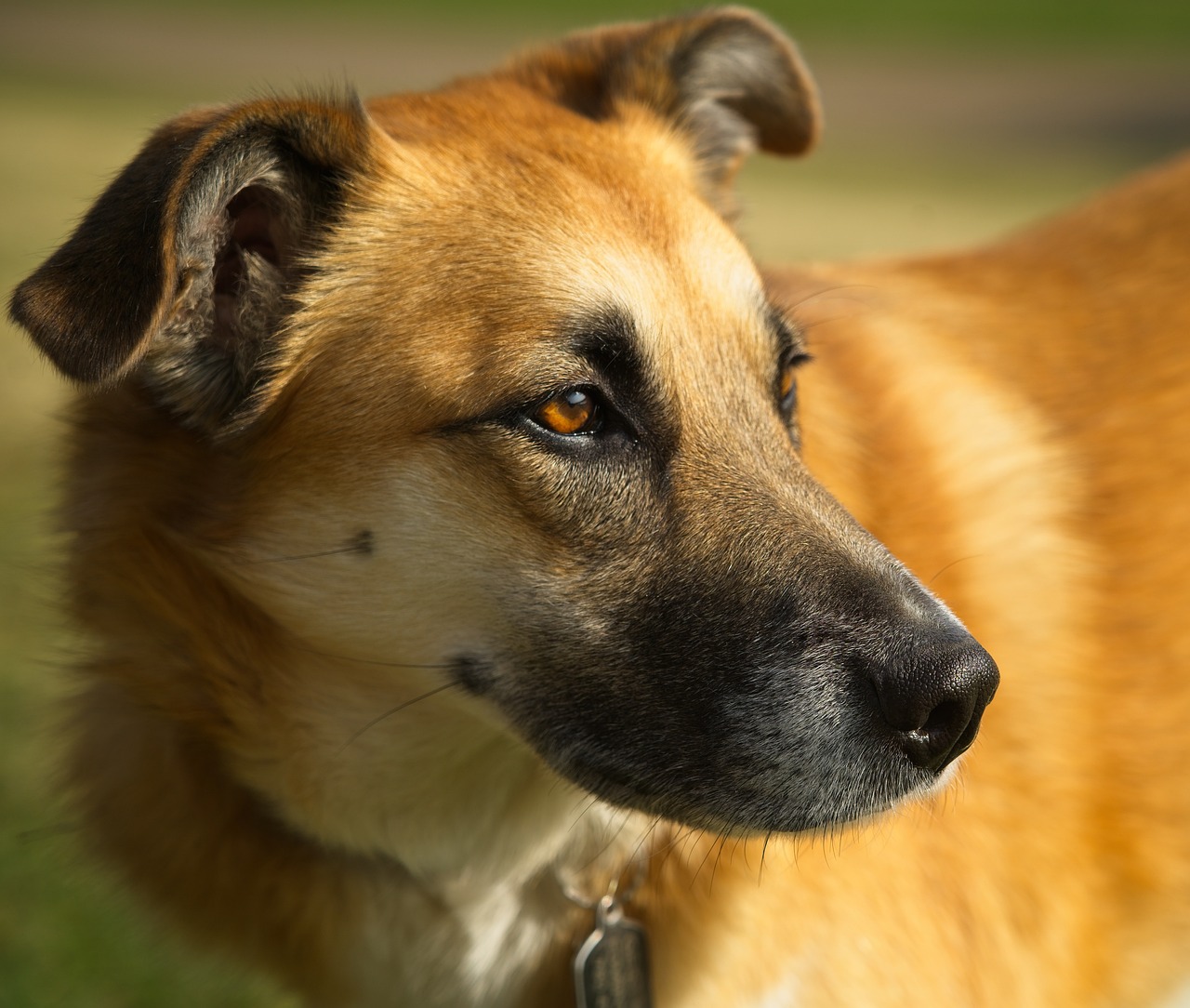
Origin and History
The German Shorthaired Pointer (GSP) boasts a rich and fascinating history that dates back to the 19th century in Germany. Originally bred as a versatile hunting dog, the GSP was designed to excel in various roles, from pointing game to retrieving it. This breed emerged from a mix of several breeds, including the English Pointer, Spanish Pointer, and various German hunting dogs. The goal was to create a dog that not only had the stamina to hunt in the field but also the intelligence to work closely with its human companions.
As hunting became more popular in Europe, the need for a reliable dog that could adapt to different environments and types of game became crucial. The GSP quickly gained recognition for its incredible nose, speed, and agility. These traits made them not just excellent hunters but also adaptable to various tasks, including tracking, searching, and even competing in dog sports. Their versatility is a testament to their breeding, as they were designed to be all-around hunting companions.
Throughout the years, the GSP has transitioned from a purely hunting dog to a beloved family pet. This change reflects a broader trend in dog breeding, where many breeds have been adapted for companionship rather than solely for work. Today, the German Shorthaired Pointer is recognized for its loyalty, intelligence, and playful nature, making it a popular choice for families and individuals alike.
Understanding the history of the GSP provides insight into its personality traits. Their hunting instincts are deeply ingrained, and they often exhibit a strong drive to explore and engage with their environment. This breed's background also explains their need for both physical and mental stimulation, as they were bred to work alongside humans in dynamic and challenging situations.
In summary, the German Shorthaired Pointer's origin as a multi-faceted hunting dog has shaped its personality, making it an energetic, intelligent, and loyal companion. Their adaptability and eagerness to please have allowed them to thrive in various roles, from working dogs to cherished family members. As we continue to explore their temperament and behavior, it becomes clear that the GSP is more than just a pretty face; it’s a breed with a rich history and a heart full of love.
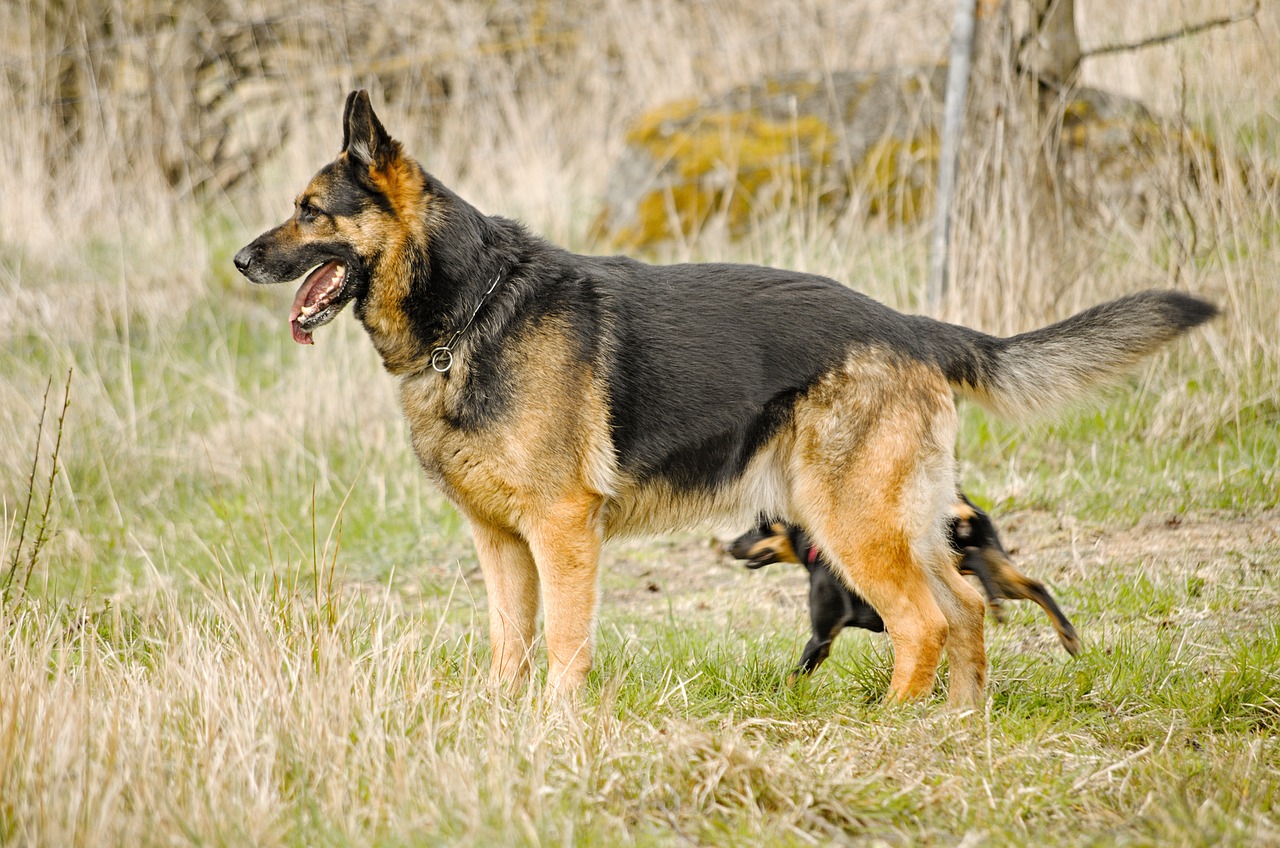
Temperament Overview
The German Shorthaired Pointer is a breed that embodies a captivating mix of energy, intelligence, and loyalty. These dogs are not just pets; they are dynamic companions that thrive on interaction and activity. Their temperament is often described as affectionate and playful, making them wonderful family members. However, their high energy levels and sharp minds mean that they require more than just a casual stroll around the block. Understanding their temperament is key to ensuring a happy and harmonious relationship.
One of the most notable characteristics of the German Shorthaired Pointer is their energy levels. These dogs are like a ball of fire, always ready to spring into action. Daily exercise is not just a recommendation; it's a necessity. Without sufficient physical activity, they can become restless and even destructive. Imagine having a toddler who hasn’t had their nap—chaos ensues! Similarly, a bored German Shorthaired Pointer can turn your living room into a whirlwind of mischief. Therefore, owners must commit to providing at least an hour of vigorous exercise each day.
German Shorthaired Pointers are known for their high energy levels, requiring regular exercise and mental stimulation to maintain their well-being and happiness. Engaging them in activities that challenge both their bodies and minds is crucial. Activities such as running, swimming, or playing fetch can help burn off their excess energy. Additionally, they thrive on activities that involve their natural instincts, such as hunting or tracking. This breed is not content to lounge around; they need to be actively involved in their environment.
To keep a German Shorthaired Pointer healthy, they need at least an hour of vigorous exercise daily, including activities like running, swimming, or playing fetch. This breed loves to explore, so taking them on long walks or hikes can be incredibly beneficial. Here’s a quick overview of some activities that can help meet their exercise needs:
- Running: Ideal for burning off energy.
- Swimming: Great for cooling off and exercising simultaneously.
- Playing Fetch: Engages their hunting instincts and provides physical activity.
Engaging activities such as agility training, scent work, or obedience training can help fulfill their energy needs and strengthen the bond with their owners. These activities not only provide physical stimulation but also mental challenges that keep them sharp. Think of it as giving your dog a job to do; it gives them purpose and satisfaction. Plus, training sessions can be a fantastic way to reinforce good behavior and enhance communication between you and your furry friend.
Proper socialization from a young age is essential for German Shorthaired Pointers to develop into well-rounded dogs. If they are not exposed to various people, environments, and other animals early on, they can become reserved with strangers. Socialization helps them learn how to interact appropriately in different situations. It’s like teaching a child how to navigate the world; the more experiences they have, the more confident they become. Early and consistent exposure will help them grow into friendly and approachable adults.
In summary, the temperament of the German Shorthaired Pointer is a blend of high energy, intelligence, and loyalty. They are not just dogs; they are enthusiastic partners in adventure. With proper exercise, training, and socialization, they can make the perfect family pet or working companion. Their affectionate nature and playful demeanor make them a joy to have around, as long as their needs are met.
- How much exercise does a German Shorthaired Pointer need? They require at least an hour of vigorous exercise daily.
- Are German Shorthaired Pointers good with children? Yes, they are generally gentle and playful with children.
- What training methods work best for German Shorthaired Pointers? Positive reinforcement techniques are highly effective for this breed.
- Do they require a lot of socialization? Yes, early socialization is crucial for their development.
Energy Levels
This article delves into the unique traits, behaviors, and temperaments of the German Shorthaired Pointer, highlighting their suitability as family pets and working dogs.
Understanding the background of the German Shorthaired Pointer provides insight into its personality traits, including its hunting instincts and versatility as a breed.
The temperament of the German Shorthaired Pointer is characterized by energy, intelligence, and loyalty, making them both engaging companions and effective working dogs.
German Shorthaired Pointers are known for their high energy levels, which is one of the defining characteristics of the breed. These dogs were originally bred for hunting, which means they possess a natural drive to be active and engaged. If you’ve ever seen a GSP in action, you know they’re like a coiled spring, ready to burst into activity at a moment’s notice! This energy is not just about running around; it encompasses a whole spectrum of physical and mental activities that are essential for their well-being.
To keep your German Shorthaired Pointer happy and healthy, it's crucial to provide them with at least an hour of vigorous exercise every day. This could include a mix of activities such as:
- Running in the park
- Swimming in a lake
- Playing fetch in the backyard
Incorporating a variety of exercises helps prevent boredom and destructive behaviors that can arise from pent-up energy. Think of it like a child who has been cooped up inside all day; they need an outlet to release that energy!
As a general guideline, aim for at least an hour of exercise each day, but remember that some GSPs may require even more! They thrive on activities that challenge their physical and mental capabilities. Engaging in activities like running alongside a bike or participating in a dog sport can be incredibly beneficial. Not only does this satisfy their need for exercise, but it also strengthens the bond between you and your furry friend.
In addition to regular exercise, you can keep your German Shorthaired Pointer mentally stimulated through various activities. Consider the following:
- Agility Training: This can be a fun way to channel their energy while improving their coordination and obedience.
- Scent Work: GSPs have an excellent sense of smell; engaging them in scent games can be both rewarding and tiring for them.
- Obedience Training: Regular training sessions not only help with discipline but also provide mental stimulation.
By incorporating these activities into your dog’s routine, you’ll find that they are not only happier but also more well-behaved. Remember, a tired dog is a happy dog!
Proper socialization from a young age is essential for German Shorthaired Pointers to develop into well-rounded dogs, as they can be reserved with strangers if not exposed early.
German Shorthaired Pointers are highly intelligent, making them quick learners; however, their independent nature can sometimes pose challenges during training.
Utilizing positive reinforcement techniques, such as treats and praise, can enhance training effectiveness and encourage desired behaviors in German Shorthaired Pointers.
Some common challenges in training German Shorthaired Pointers include their stubbornness and distraction by scents, which requires patience and consistency from their owners.
German Shorthaired Pointers can be excellent family pets, known for their affectionate nature and compatibility with children, provided they receive adequate training and socialization.
These dogs are generally gentle and playful with children, making them suitable companions for families, as long as they are properly supervised during play.
While they thrive in active households, German Shorthaired Pointers require ample space to roam and play, making them best suited for homes with yards or access to open areas.
Q: How much exercise does a German Shorthaired Pointer need?
A: They typically require at least an hour of vigorous exercise daily.
Q: Are German Shorthaired Pointers good with kids?
A: Yes, they are generally gentle and playful with children, making them great family pets.
Q: Can GSPs live in apartments?
A: While they can adapt, they do best in homes with ample space to run and play.
Daily Exercise Needs
German Shorthaired Pointers are not just your average couch potatoes; they are energetic dynamos that thrive on activity. To keep these lively pups happy and healthy, they require at least an hour of vigorous exercise each day. Think of it this way: if you were a German Shorthaired Pointer, would you want to spend all day lounging around? Absolutely not! These dogs were bred as versatile hunting companions, which means they have a natural instinct to run, chase, and explore. Regular exercise is not just a luxury for them; it’s a necessity.
So, what does this daily exercise look like? It can include a variety of activities that not only burn off energy but also stimulate their minds. Here are some engaging options:
- Running: Whether it's a jog in the park or a sprint on the beach, running is a fantastic way to let them stretch their legs.
- Swimming: Many German Shorthaired Pointers love water. A good swim can be both refreshing and exhausting!
- Playing Fetch: This classic game is perfect for exercising their retrieving instincts and keeping them engaged.
In addition to these activities, incorporating agility training can be a game-changer. Not only does it provide physical exercise, but it also challenges their minds. Think of agility training as an obstacle course for dogs, where they can leap, weave, and navigate their way through various challenges. It’s a fun way to bond with your furry friend while ensuring they stay fit.
It’s important to remember that every dog is unique. Some may require more exercise than others, depending on their age, health, and energy levels. Therefore, always pay attention to your pup’s cues. If they seem restless or are engaging in destructive behaviors, it may be a sign that they need more physical activity. On the flip side, after a good workout, you’ll likely find your German Shorthaired Pointer sprawled out on the floor, a satisfied grin on their face, and that’s the sign of a happy dog!
In summary, meeting the daily exercise needs of a German Shorthaired Pointer is vital for their overall well-being. By providing them with a mix of activities that challenge both their body and mind, you’ll not only keep them healthy but also strengthen the bond between you and your four-legged companion.
- How much exercise do German Shorthaired Pointers need? They typically require at least one hour of vigorous exercise daily.
- What are some good activities for German Shorthaired Pointers? Running, swimming, playing fetch, and agility training are excellent choices.
- Can they live in an apartment? While they can adapt, it’s best if they have access to a yard or open areas to run and play.
- Are they good with children? Yes, they are generally gentle and playful with children, but supervision during playtime is essential.
Activities to Engage Them
The German Shorthaired Pointer (GSP) is a breed that thrives on activity and mental challenges, making it essential to incorporate a variety of engaging activities into their daily routine. Imagine having a furry friend who not only loves to run but also enjoys solving puzzles and learning new tricks! This breed's natural curiosity and intelligence mean they need more than just a walk around the block to stay happy and healthy. Regular physical and mental stimulation is crucial for preventing boredom and destructive behaviors.
One of the most effective ways to engage a GSP is through agility training. This activity not only provides physical exercise but also sharpens their focus and obedience. Picture your GSP darting through tunnels, jumping over hurdles, and weaving through poles—it’s a fantastic way to bond while keeping them fit! Additionally, participating in agility competitions can be an exciting outlet for their energy and a great way to showcase their skills.
Another engaging activity is scent work. GSPs have an exceptional sense of smell, and activities that allow them to use this natural talent can be incredibly rewarding. You can start simple by hiding treats around your home or yard and encouraging your dog to find them. As they become more proficient, you can increase the difficulty by using scent trails or even participating in organized scent detection classes. This not only stimulates their mind but also taps into their instincts, making them feel accomplished.
Don't forget about obedience training, which is not just about teaching commands but also about creating a strong bond with your dog. Regular training sessions using positive reinforcement techniques, such as treats and praise, can keep their minds sharp and reinforce good behavior. These sessions can be fun and rewarding for both you and your GSP, turning training into a game rather than a chore.
Lastly, incorporating playtime into your GSP's daily routine is vital. Activities like playing fetch, tug-of-war, or even swimming can be exhilarating for them. GSPs are natural retrievers, and games that involve retrieving objects will not only satisfy their instincts but also give them a sense of purpose. Remember, a tired GSP is a happy GSP, so make sure to mix up these activities to keep things fresh and exciting!
In summary, engaging a German Shorthaired Pointer requires a combination of physical exercise and mental challenges. By incorporating agility training, scent work, obedience training, and play into their daily lives, you can ensure that your GSP remains a happy and well-rounded companion. The key is to keep the activities varied and fun, allowing your pup to thrive both physically and mentally.
- How much exercise does a German Shorthaired Pointer need?
A GSP typically requires at least an hour of vigorous exercise each day, including activities like running, swimming, and playing fetch. - Are German Shorthaired Pointers good with children?
Yes, they are generally gentle and playful with children, making them suitable family pets when supervised during play. - Can German Shorthaired Pointers live in apartments?
While they can adapt to apartment living, they thrive best in homes with yards or access to open areas where they can run and play. - What training methods work best for German Shorthaired Pointers?
Positive reinforcement techniques, such as treats and praise, are effective for training GSPs, as they respond well to encouragement.
Socialization Requirements
Socialization is a crucial aspect of raising a well-adjusted German Shorthaired Pointer. Just like a sponge absorbs water, these dogs soak up experiences and interactions, shaping their personalities and behaviors. Starting early is key; the first few months of a puppy's life are like a blank canvas, and the more colors you add through varied experiences, the more vibrant the final picture will be. If you want a dog that’s friendly and confident, you’ll need to introduce them to a variety of people, environments, and other animals.
Without proper socialization, a German Shorthaired Pointer can become reserved or even fearful around strangers. Imagine having a friend who never leaves their house; they might be friendly but could also be a bit awkward in new situations. Similarly, dogs that lack social exposure may not know how to behave in different environments, which can lead to anxiety or aggression. To prevent this, consider the following:
- Exposure to Different Environments: Take your dog to parks, busy streets, and different terrains. Each new place is an opportunity for them to learn and adapt.
- Meeting New People: Invite friends over and take your dog to gatherings. This helps them become accustomed to various personalities and interactions.
- Interaction with Other Dogs: Arrange playdates with other dogs or visit dog parks. This teaches them essential social cues and proper dog etiquette.
Additionally, enrolling your German Shorthaired Pointer in puppy classes can be immensely beneficial. These classes not only provide structured training but also expose your puppy to other dogs and people in a controlled environment. Think of it as a school for dogs, where they can learn the ropes of social behavior while having fun. Remember, the goal is to create positive experiences, so always reward your pup with treats and praise when they interact positively.
In summary, socialization is not just a box to check off; it's an ongoing journey that lays the foundation for a happy, well-behaved dog. The more diverse the experiences you provide, the better equipped your German Shorthaired Pointer will be to navigate the world confidently and comfortably.
Q: At what age should I start socializing my German Shorthaired Pointer?
A: Ideally, socialization should begin as early as 7 to 8 weeks old. The critical period for socialization is from 3 to 14 weeks, so the sooner, the better!
Q: How long should socialization last?
A: Socialization is an ongoing process. Continue to expose your dog to new experiences throughout their life, even after the initial critical period.
Q: What if my German Shorthaired Pointer is shy or fearful?
A: Take it slow. Gradually introduce them to new experiences and always use positive reinforcement to encourage confidence.
Q: Can I socialize my adult German Shorthaired Pointer?
A: Yes! While it may take more time and patience, adult dogs can still learn to socialize. Use positive experiences to help them feel comfortable.

Intelligence and Trainability
The German Shorthaired Pointer is not just a pretty face; this breed is renowned for its remarkable intelligence, which makes them quick learners and eager to please. However, this intelligence comes with a twist: their independent nature can sometimes challenge the training process. Imagine trying to teach a teenager who thinks they know it all—it's a bit like that! Their sharp minds need to be engaged, or else they might just decide to do their own thing.
One of the most effective ways to train a German Shorthaired Pointer is through positive reinforcement. This method involves rewarding them with treats, praise, or playtime whenever they exhibit the desired behavior. For instance, if your pup successfully sits on command, shower them with affection and a tasty treat. This not only reinforces the behavior but also strengthens the bond between you and your furry friend. It's like giving them a high-five for a job well done!
However, it's important to be aware of some common training challenges that may arise. For example, their natural stubbornness can sometimes lead to resistance during training sessions. Additionally, their keen sense of smell can easily distract them from the task at hand. Imagine walking through a park filled with enticing scents—it's no wonder they might lose focus! To combat these challenges, consistency and patience are key. Regular training sessions, lasting about 5 to 10 minutes, can help keep their attention while preventing boredom.
| Common Training Challenges | Solutions |
|---|---|
| Stubbornness | Use consistent commands and rewards; maintain a positive attitude. |
| Distraction by Scents | Train in a low-distraction environment before gradually introducing them to more stimulating settings. |
| Boredom | Vary training activities and incorporate new tricks to keep them engaged. |
In conclusion, while training a German Shorthaired Pointer may come with its hurdles, the rewards are well worth the effort. Their intelligence, coupled with the right training techniques, can turn them into well-mannered companions. Just remember, patience and consistency are your best friends throughout this journey!
- How long does it take to train a German Shorthaired Pointer? Training duration varies, but with consistent effort, basic commands can typically be mastered within a few weeks.
- Are German Shorthaired Pointers easy to train? They are generally easy to train due to their intelligence, but their independent streak may require extra patience.
- What is the best age to start training? It's best to start training as early as 8 weeks old to instill good habits and socialization.
- Can they be trained for specific tasks? Absolutely! Their versatility allows them to excel in various roles, including hunting, agility, and obedience.
Positive Reinforcement Techniques
When it comes to training your German Shorthaired Pointer, using can make all the difference. These dogs are known for their intelligence and eagerness to please, but their independent streak means that traditional training methods might not always yield the best results. Instead, focusing on rewarding good behavior with treats, praise, or playtime can create a more enjoyable experience for both you and your furry friend.
Imagine this: every time your German Shorthaired Pointer successfully follows a command, you shower them with affection and tasty treats. This not only reinforces the behavior but also strengthens the bond between you two. It's like building a bridge of trust and understanding, where your dog learns that good things happen when they listen to you.
Here are some effective positive reinforcement techniques you can implement:
- Treat Rewards: Use small, tasty treats that your dog loves. Keep them handy during training sessions to reward immediate good behavior.
- Verbal Praise: Your voice is a powerful tool! Use enthusiastic and encouraging words to let your dog know they did a great job.
- Playtime: For some dogs, play is the ultimate reward. Incorporate their favorite toy into training sessions as a way to celebrate successes.
One of the key aspects of positive reinforcement is timing. It's crucial to reward your dog immediately after they perform the desired behavior. This helps them make the connection between the action and the reward, reinforcing the learning process. Think of it as a dance; the more in sync you are, the smoother the performance will be!
However, be mindful of the quantity and quality of treats you offer. Overindulging can lead to unwanted weight gain, which is why it's important to balance treats with your dog's regular diet. You might consider using low-calorie treats or even pieces of their kibble to keep them healthy while still rewarding their good behavior.
In addition to treats and praise, consistency is key. Establish a routine where certain commands are always followed by the same reward. This predictability helps your German Shorthaired Pointer understand what is expected of them and what they can earn in return. Just like any good relationship, consistency builds trust and reliability.
Lastly, remember to be patient. Training takes time, especially with a breed known for its spirited personality. If your dog struggles with a command, don’t get frustrated. Instead, take a step back, reassess your approach, and try again. With the right techniques and a positive attitude, you’ll be amazed at how quickly your German Shorthaired Pointer can learn and thrive.
Q: How long should I train my German Shorthaired Pointer each day?
A: Ideally, training sessions should be short and engaging, lasting about 5-10 minutes multiple times a day. This keeps your dog focused and eager to learn.
Q: What if my dog doesn’t respond to treats?
A: If your dog isn't motivated by treats, try using their favorite toys, verbal praise, or playtime as rewards. Every dog is different, so find what excites your pup!
Q: Can I train my German Shorthaired Pointer without using treats?
A: Yes! While treats are effective, you can also use praise, play, and affection as rewards. The key is to find what motivates your dog the most.
Q: How do I know if my training is effective?
A: Look for signs of progress, such as your dog responding to commands more quickly or showing eagerness to participate in training sessions. If they seem engaged and happy, you’re on the right track!
Common Training Challenges
Training a German Shorthaired Pointer can sometimes feel like trying to catch smoke with your bare hands. These dogs are not only highly intelligent but also possess a strong independent streak that can make them seem a bit stubborn. One moment they are eagerly following your commands, and the next, they might be distracted by the faintest scent wafting through the air. This can lead to a few common training challenges that every owner should be aware of.
First and foremost, their stubbornness can be a significant hurdle. While they are quick learners, they often have their own ideas about what they want to do. For instance, if they decide that chasing a squirrel is far more interesting than sitting on command, you might find yourself in a battle of wills. This is where patience and consistency come into play. Owners must remember that training is not just about commands but also about building a relationship based on trust and respect.
Another challenge is their tendency to get easily distracted. With their keen sense of smell, German Shorthaired Pointers can become completely absorbed in following a scent trail. Imagine trying to have a conversation in a bustling café; that’s how your dog might feel when they catch a whiff of something intriguing outside. To combat this, training sessions should be conducted in a distraction-free environment initially, gradually introducing distractions as they become more proficient in their training.
Additionally, inconsistent training can lead to confusion for your dog. If you sometimes allow them to jump on the furniture and other times scold them for it, they won't understand the rules. Consistency is key in reinforcing good behavior. Establishing clear commands and sticking to them will help your German Shorthaired Pointer understand what is expected of them.
To summarize, here are some common training challenges faced by owners of German Shorthaired Pointers:
- Stubbornness: They may resist commands if they find something more interesting.
- Distraction: Their keen sense of smell can lead them off course.
- Inconsistency: Mixed signals can create confusion about rules and expectations.
In overcoming these challenges, employing positive reinforcement techniques can make a world of difference. Rewarding your dog with treats, praise, or playtime when they follow commands can motivate them to repeat those behaviors. Remember, training should be a fun and rewarding experience for both you and your dog!
- How long does it take to train a German Shorthaired Pointer?
Training time can vary greatly depending on the individual dog and the consistency of the owner. Generally, with regular practice, you can expect to see significant progress within a few weeks. - Are German Shorthaired Pointers easy to train?
They are intelligent and eager to please, which makes them relatively easy to train. However, their independent nature can sometimes pose challenges. - What is the best way to train a German Shorthaired Pointer?
Using positive reinforcement methods, such as treats and praise, combined with consistent commands, is the most effective way to train this breed.
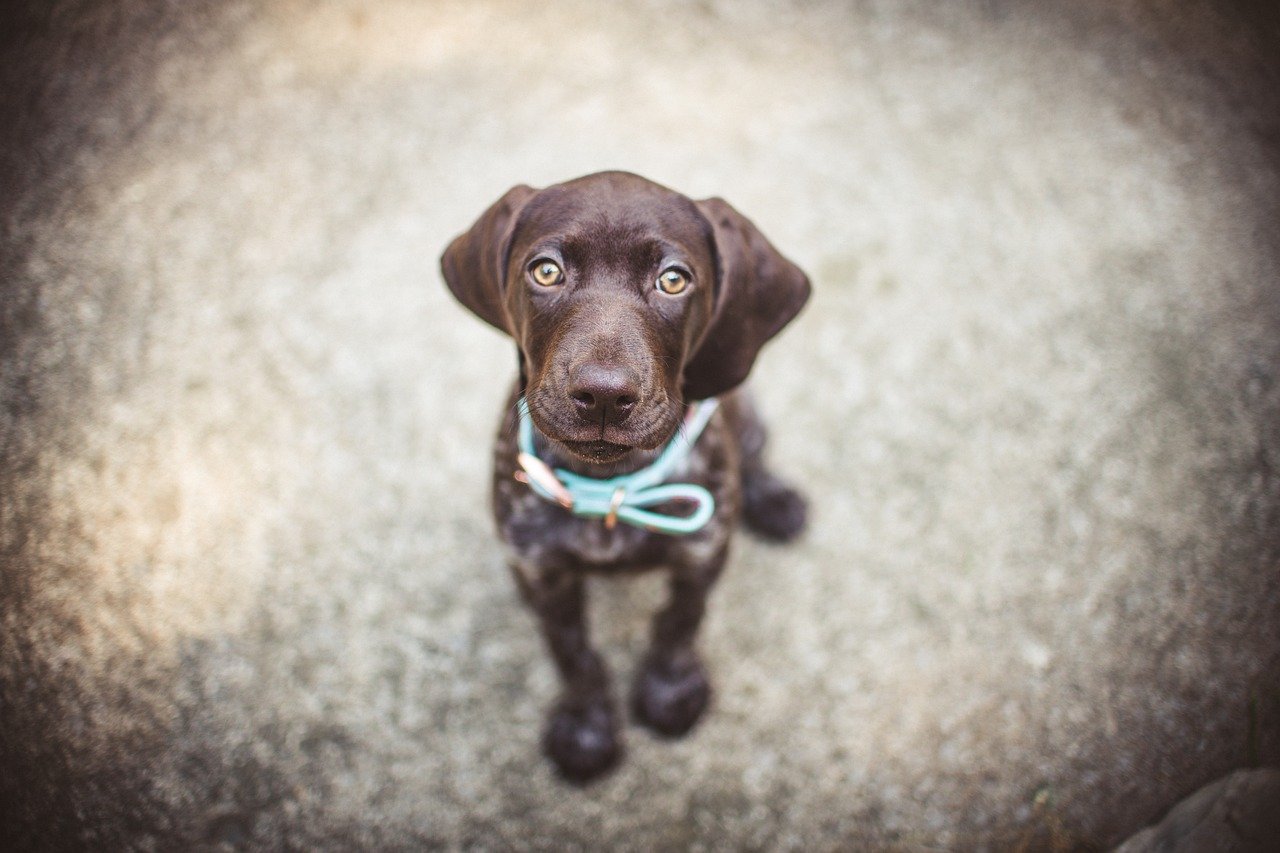
Family Compatibility
The German Shorthaired Pointer (GSP) is not just a dog; it’s a **dynamic family member** that thrives on companionship and interaction. Their affectionate nature makes them **wonderful companions** for families, particularly those with children. Imagine a dog that not only keeps you active but also fills your home with joy and laughter! However, it's essential to ensure that they receive the right training and socialization from an early age to truly flourish in a family environment.
These dogs are known for their playful demeanor and gentle temperament, which allows them to interact well with children. They can be quite **energetic**, often engaging in playful antics that keep kids entertained for hours. It's like having a built-in playmate! However, supervision during playtime is crucial, as their energy can sometimes lead to roughhousing. A little guidance can help ensure that play remains safe and fun for everyone involved.
In terms of living arrangements, GSPs are best suited for families that can provide them with ample space to roam and play. They thrive in **active households**, where they can enjoy outdoor activities and engage with their human companions. If you have a **yard** or access to open areas, that's a significant plus! These dogs need to stretch their legs and explore their surroundings. Think of them as a bundle of energy that needs room to run free!
Moreover, socialization is key for GSPs. Early exposure to various environments, people, and other animals helps them develop into well-rounded pets. If they are not properly socialized, they may become reserved or overly protective around strangers. Therefore, taking them to parks, dog-friendly events, or even just on walks through the neighborhood can significantly enhance their social skills.
In summary, the German Shorthaired Pointer can be an **excellent family pet**, offering loyalty, love, and a whole lot of fun. With adequate training, socialization, and an active lifestyle, they can truly become an integral part of your family. So, are you ready to welcome this spirited breed into your home?
- Are German Shorthaired Pointers good with children? Yes, they are generally gentle and playful with children, making them suitable companions for families.
- How much exercise do they need? German Shorthaired Pointers require at least an hour of vigorous exercise daily to stay healthy and happy.
- Can they adapt to apartment living? While they can adapt, GSPs thrive in homes with yards or access to open areas for exercise.
- Do they get along with other pets? With proper socialization, GSPs can get along well with other pets, but early exposure is crucial.
Interactions with Children
When it comes to family dynamics, the German Shorthaired Pointer (GSP) shines as a fantastic companion for children. These dogs are not just pets; they become integral members of the family, often forming deep bonds with the little ones. Their affectionate nature means they genuinely enjoy being around kids, playing, and engaging in various activities. However, it's essential to supervise their interactions to ensure that both the dog and the child are safe and happy.
One of the remarkable traits of GSPs is their playful demeanor. They are known for their boundless energy and enthusiasm, making them perfect playmates for active children. Imagine a game of fetch that turns into a sprint across the yard—children and dogs alike can find joy in such moments. The natural instinct of a GSP to retrieve can lead to countless hours of fun, helping children develop their motor skills and encouraging outdoor play.
While GSPs are generally gentle, it’s crucial to teach children how to interact with them appropriately. Kids should understand the importance of respecting the dog’s space and recognizing when the dog needs a break. Just like humans, dogs have their moods, and sometimes they may prefer to relax rather than engage in rough play. Teaching children these nuances fosters a respectful relationship between them and their furry friend.
Moreover, early socialization plays a pivotal role in ensuring that GSPs are comfortable around children. Dogs that have been exposed to kids from a young age tend to be more tolerant and understanding of their antics. This exposure helps in developing a calm and friendly demeanor, allowing the dog to adapt to the unpredictable nature of children's behavior. It’s a win-win situation where both the dog and the child learn to coexist harmoniously.
To further illustrate the positive interactions between GSPs and children, here’s a quick overview of how these dogs can contribute to a child’s growth and development:
| Benefits of GSPs for Children | Description |
|---|---|
| Physical Activity | Encourages kids to be active, promoting a healthy lifestyle. |
| Emotional Support | Provides companionship, helping children feel loved and secure. |
| Responsibility | Teaches children how to care for a pet, fostering a sense of responsibility. |
| Social Skills | Enhances social interactions through shared play and activities. |
In conclusion, the German Shorthaired Pointer is not just a dog; they are a loving addition to any family, especially those with children. Their playful nature, combined with the right training and supervision, can create a nurturing environment where both kids and dogs thrive. By fostering positive interactions, families can enjoy the unique bond that only a GSP can provide.
- Are German Shorthaired Pointers good with young children? Yes, they are generally gentle and playful with children, making them suitable companions.
- How much exercise do GSPs need? GSPs require at least an hour of vigorous exercise daily to stay healthy and happy.
- Can GSPs live in apartments? While they can adapt, GSPs thrive in homes with yards or access to open spaces.
- What training methods work best for GSPs? Positive reinforcement techniques, such as treats and praise, are highly effective.
Living Arrangements
When it comes to finding the perfect home for a German Shorthaired Pointer, there are a few key considerations to keep in mind. These energetic and intelligent dogs thrive in environments that allow them to explore and play freely. Ideally, they should have access to a spacious yard where they can run, chase, and burn off their abundant energy. Think of them as the enthusiastic kids on a playground—if they don’t have enough space to play, they might become restless and find their own ways to entertain themselves, which could lead to mischief!
In addition to having a yard, it's important that their living arrangements cater to their social nature. German Shorthaired Pointers are not the type of dogs that enjoy being left alone for long periods. They are highly social creatures that flourish on interaction, whether it's with their human family or other pets. A home filled with activity and companionship will keep them happy and healthy. If you live in an apartment or a smaller space, consider how you can provide them with enough physical and mental stimulation. Regular trips to the dog park or engaging in outdoor activities can help fulfill their needs, but remember, they will always prefer the freedom of a yard!
Moreover, it's essential to consider the safety of the environment. A secure, fenced yard is crucial; these dogs are natural explorers and can easily dart off if they catch a whiff of something intriguing. While they are generally well-behaved, their hunting instincts can kick in, leading them to chase after small animals or even just follow an interesting scent. Thus, ensuring your yard is properly enclosed will help keep them safe while they enjoy their outdoor adventures.
In summary, the ideal living arrangement for a German Shorthaired Pointer includes:
- A spacious yard for exercise and play.
- Regular interaction with family members or other pets.
- A secure environment to prevent escapes.
By creating a stimulating and safe living space, you’ll not only enhance your German Shorthaired Pointer's quality of life but also strengthen the bond between you and your furry friend.
- Do German Shorthaired Pointers get along with other pets?
Yes, with proper socialization, they can coexist peacefully with other pets. - How much exercise do they really need?
These dogs require at least an hour of vigorous exercise daily to stay healthy and happy. - Are they good with children?
Absolutely! They are known for their gentle and playful nature with kids, making them great family pets. - Can they adapt to apartment living?
While they can live in apartments, it requires extra effort to ensure they get enough exercise and mental stimulation.
Frequently Asked Questions
- What is the typical energy level of a German Shorthaired Pointer?
German Shorthaired Pointers are known for their high energy levels. They require at least an hour of vigorous exercise every day to keep them happy and healthy. Activities like running, swimming, and playing fetch are great for burning off that energy!
- Are German Shorthaired Pointers good with children?
Absolutely! These dogs are generally gentle and playful with children, making them excellent family pets. However, it's essential to supervise their interactions to ensure safety and enjoyment for everyone involved.
- How important is socialization for German Shorthaired Pointers?
Socialization is crucial for German Shorthaired Pointers, especially when they are young. Proper exposure to various people, environments, and experiences helps them become well-rounded dogs and prevents them from being overly reserved or anxious around strangers.
- What training methods work best for German Shorthaired Pointers?
Positive reinforcement techniques, such as using treats and praise, are highly effective when training German Shorthaired Pointers. These methods encourage good behavior and help strengthen the bond between you and your pup.
- Do German Shorthaired Pointers require a lot of space?
Yes, they thrive in active households with ample space to roam and play. Ideally, they should have access to a yard or open areas where they can run freely. If you live in an apartment, be prepared to provide plenty of outdoor exercise.
- What are common training challenges with German Shorthaired Pointers?
One of the main challenges is their independent nature, which can sometimes lead to stubbornness. Additionally, their strong hunting instincts may distract them, especially when they catch a whiff of something interesting. Patience and consistency are key!
- Can German Shorthaired Pointers be left alone for long periods?
It's not advisable to leave them alone for extended periods. They are social dogs that thrive on companionship and can become bored or anxious if left alone too long. If you have a busy schedule, consider hiring a dog walker or pet sitter.

